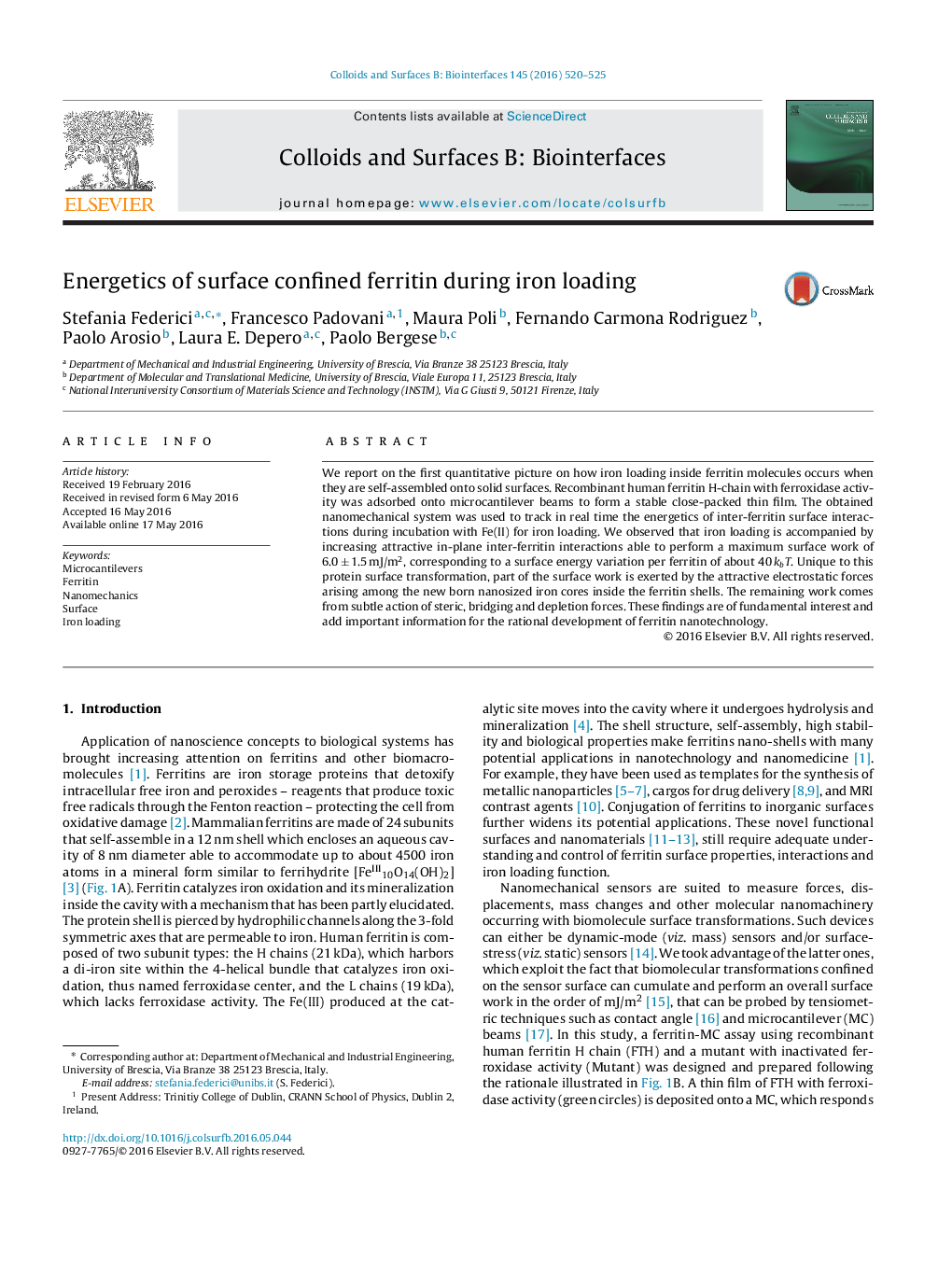| Article ID | Journal | Published Year | Pages | File Type |
|---|---|---|---|---|
| 598976 | Colloids and Surfaces B: Biointerfaces | 2016 | 6 Pages |
•Microcantilevers are used to study iron loading inside solid supported ferritin.•The variations of inter-ferritin interactions due to iron loading is tracked.•Iron loading triggers attractive in-plane inter-ferritin forces (max 40 kbT).•Part of these forces comes from electrostatic attraction between the iron cores.•The remaining comes from subtle action of steric, bridging and depletion forces.
We report on the first quantitative picture on how iron loading inside ferritin molecules occurs when they are self-assembled onto solid surfaces. Recombinant human ferritin H-chain with ferroxidase activity was adsorbed onto microcantilever beams to form a stable close-packed thin film. The obtained nanomechanical system was used to track in real time the energetics of inter-ferritin surface interactions during incubation with Fe(II) for iron loading. We observed that iron loading is accompanied by increasing attractive in-plane inter-ferritin interactions able to perform a maximum surface work of 6.0 ± 1.5 mJ/m2, corresponding to a surface energy variation per ferritin of about 40 kbT. Unique to this protein surface transformation, part of the surface work is exerted by the attractive electrostatic forces arising among the new born nanosized iron cores inside the ferritin shells. The remaining work comes from subtle action of steric, bridging and depletion forces. These findings are of fundamental interest and add important information for the rational development of ferritin nanotechnology.
Graphical abstractFigure optionsDownload full-size imageDownload as PowerPoint slide
